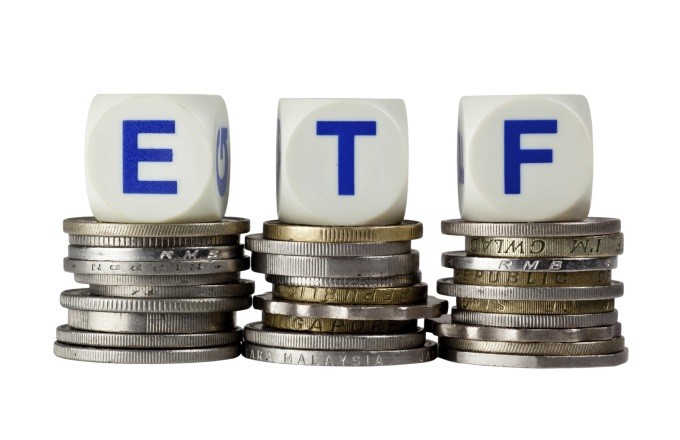What are Exchange Traded Products They include ETFS and ETNs
Post on: 16 Март, 2015 No Comment

Posted on November 15, 2011 by Evan 13 Comments
Exchange Traded Funds have been popular for decades since they provide diversification with the ease of trading and dollar cost averaging. They have gotten so popular that the actual topic of ETFs now include specific industries. super concentrated funds and even active investing. However, when is an ETF not really an ETF?
Exchange Traded Products Other than Exchange Traded Funds
Exchange Traded Products, of which ETFs are a member of, is more comprehensive name that is not used that often by the main stream media. According to Investopedia an Exchange Traded Product is,
A type of security that is derivatively-priced and which trades intra-day on a national securities exchange. Exchange Traded Products are derivatively-priced, where the value is derived from another investment instruments such as a commodity, currency, share price or interest rate. Generally, exchange traded products are benchmarked to stocks, commodities, indices or they can be actively managed funds. Exchange traded products include exchange traded funds (ETFs), exchange traded vehicles (ETVs), exchange traded notes (ETNs) and certificates.
So every ETF is an ETP but not every ETP is an ETF! It is sort of like the fact that every PlayStation3 is a game system but not every Game system is a PS3 (terrible example but that is in front of me right now).
Two Examples of ETFs that arent Actually ETFs
Grantor Trusts
“What is GLD or SLV?” They are obviously not an index which is being tracked for daily trades. GLD or SLV are actually Grantor Trusts which are governed under different rules than normal ETFs. Normal ETFs are governed by the Investment Company Act of 1940 while Grantor Trusts are governed under the Securities Act of 1933.
The difference? GLD actually owns the gold and so one is trading on whether the holdings of that trust is going up and down according to the gold commodity price.
I recently came across a very interesting article titled Making Tax Savvy Choices in Research Magazine that discuses the tax aspects of certain types of Exchange Traded Products. The author, Mr. Delegge, explains that these vehicles are these ETPs which are based on physical commodities are actually taxed different:
ETPs that hold physical bullion, like GLD or SLV, are taxed at a maximum capital gains rate of 28 percent, which is higher compared to other investments, like stocks. Under current tax law, profits from securities are taxed at a maximum long-term capital gain rate of zero percent for those in the 10 or 15 percent income tax bracket and 15 percent for people in higher brackets.
Exchange Traded Notes
Investopedia provides a pretty succinct definition of Exchange Traded Notes
A type of unsecured, unsubordinated debt security that was first issued by Barclays Bank PLC. This type of debt security differs from other types of bonds and notes because ETN returns are based upon the performance of a market index minus applicable fees, no period coupon payments are distributed and no principal protections exists.
Investopedia explains Exchange Traded Notes – ETN
The purpose of ETNs is to create a type of security that combines both the aspects of bonds and exchange traded funds (ETF). Similar to ETFs, ETNs are traded on a major exchange, such as the NYSE during normal trading hours. However, investors can also hold the debt security until maturity. At that time the issuer will give the investor a cash amount that would be equal to principal amount (subject to the days index factor).
One factor that affects the ETNs value is the credit rating of the issuer. The value of the ETN may drop despite no change in the underlying index, instead due to a downgrade in the issuers credit rating.
Exchange Traded Notes are often used with Commodity and Currency ETFs and according to a recent SeekingAlpha post titled, “ETN Holders: Do You Know to Whom You are Lending? ” highlights a very large problem with them,
The key feature making ETFs and ETNs different is that ETFs are fully collateralized stand-alone entities, independent of the sponsor, issuer, and manager. ETNs are senior unsecured debt obligations of the issuing firm. ETNs own nothing, are not collateralized, and carry the credit risk of the issuing firm.
An important but often overlooked point is that the issuer may be different from the ETN’s sponsor and not identified in the product’s name. Occasionally, identifying the issuer is straightforward: Morgan Stanley (MS) issues the Morgan Stanley brand of ETNs, and Credit Suisse (CS) issues the Credit Suisse ETNs.
***
If you own an ELEMENTS brand ETN, identifying the issuer becomes more difficult. This is because ELEMENTS is the only ETN sponsor currently using multiple issuers – three different firms in this case.
Do you own any ETNs or Grantor Trusts? Did you know what they actually were?














